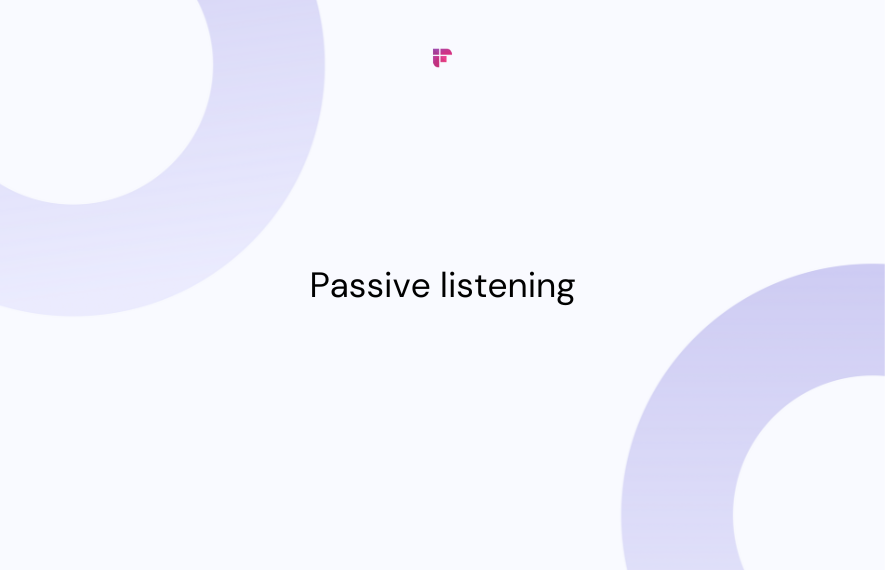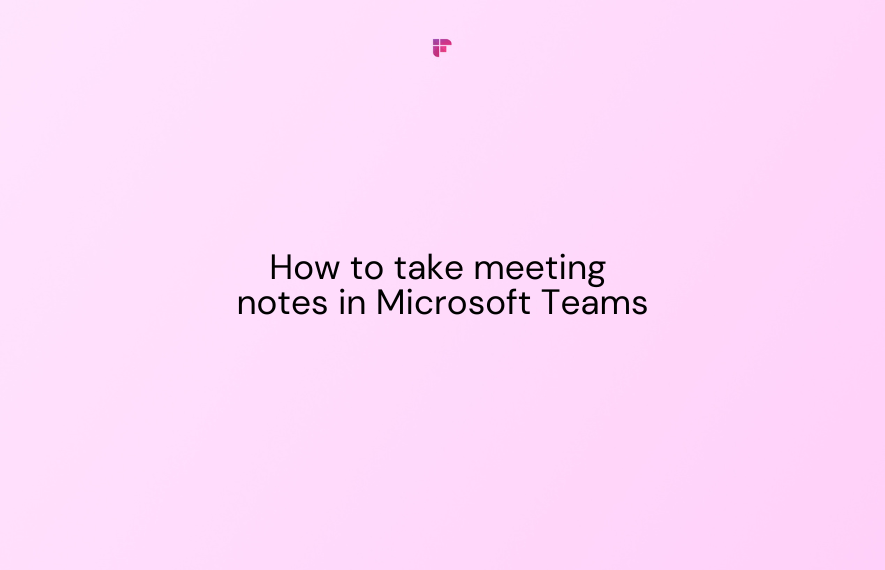
Often dismissed as the slacker cousin of active listening, passive listening gets a bad rap. But what is commonly overlooked is the subtle way passive listening fosters a positive and productive work environment.
In this blog post, we'll dive into the unspoken virtues of passive listening, exploring its definition, practical examples, and effective techniques for promoting workplace collaboration.
Understanding passive listening
Passive listening, often dismissed as a hindrance to productivity, is a valuable asset in the workplace. It is a communication style that involves absorbing information without actively listening.
Unlike active listening, which requires the listener to provide feedback, ask questions, and demonstrate understanding actively, passive listening involves taking in information without necessarily responding immediately. It is a more laid-back approach that acknowledges the importance of giving space for ideas to unfold and allows individuals to express themselves without interruption.
The silent strength of passive listening

While active listening is crucial for detailed discussions and important meetings, the ambient buzz of passive listening can create a dynamic and collaborative atmosphere. Think of an open office space where employees are absorbed in their tasks but can pick up on key information from ongoing conversations. This passive absorption of information promotes a shared understanding among team members, leading to a more cohesive and communicative workplace.
Passive listening becomes a silent bridge that connects colleagues, fostering an environment where information flows naturally. It helps create a sense of unity as employees share insights and updates in an informal setting. This relaxed exchange of information contributes to a positive workplace culture where communication feels organic and inclusive.
In summary, passive listening is great because of:
- Increased information flow: Passive listening creates an environment where information flows organically. Team members become conduits for sharing insights, updates, and ideas, fostering a culture of continuous information exchange.
- Enhanced team dynamics: Collaboration thrives on understanding team dynamics. Passive listening enables individuals to pick up on the nuances of interpersonal relationships, team moods, and unspoken concerns, contributing to a more harmonious and effective working environment.
- Spontaneous problem-solving: The informal nature of passive listening allows for spontaneous problem-solving. Armed with a wealth of background knowledge, team members can contribute ideas and solutions in real-time, addressing challenges as they arise.
- Boosted employee engagement: When individuals feel connected and informed, they are more likely to participate in collaborative efforts, contributing to a positive and vibrant workplace culture.
Practical examples of passive listening in the workplace
Here are a few examples of what passive listening might look like at work:
- Meeting observations: During team meetings, a passive listener might choose to absorb the discussions and dynamics, allowing ideas to unfold before actively contributing.
- Open-door policy: Leaders who practice passive listening through an open-door policy create an environment where team members feel comfortable expressing their thoughts without fear of immediate judgment or response.
- Email communication: Reading and absorbing emails without providing immediate responses can be a form of passive listening, allowing individuals to process information before crafting a thoughtful reply.
- Conference call silence: In virtual meetings, passive listeners may remain silent, absorbing the conversation and gathering insights before actively participating.
- Brainstorming sessions: Passive listening in brainstorming sessions enables individuals to let ideas flow without immediate critique, fostering a more creative and open environment.
Techniques to promote collaboration through passive listening
Here are some effective ways to boost collaboration with passive listening:
- Create open spaces for informal exchange: Foster collaboration by designing open spaces that encourage informal discussions. Passive listening thrives when team members can engage in spontaneous conversations, contributing to a culture of openness and shared knowledge.
- Digital platforms for casual updates: Leverage digital communication channels for casual updates and informal sharing. Platforms like team chat applications provide a virtual space for passive listening, allowing team members to stay informed about ongoing projects and developments.
- Encourage cross-functional exposure: Break down silos by encouraging cross-functional exposure. Passive listening benefits from diverse perspectives, and collaboration becomes more seamless when team members understand each other's roles.
- Leading by example: Leaders play a crucial role in setting the tone for collaboration. Demonstrate the value of passive listening by actively engaging in informal exchanges within the team. Leaders who embrace passive listening create a culture where every team member's input is valued.
- Promote active observation: Encourage team members to actively observe and passively listen during meetings and discussions. This dual approach allows individuals to absorb information not only from the speaker but also from the non-verbal cues and reactions of their colleagues, enhancing overall team understanding.
- Encourage follow-up discussions: After an initial period of passive listening, promote follow-up discussions where team members can share their reflections, ask questions, and provide feedback. This ensures that the benefits of passive listening translate into actionable insights and collaborative efforts.
Not all roses: limitations of passive listening

Now, before you go all-in on passive listening, let's acknowledge its limitations. While passive listening can be a valuable aspect of workplace communication, it does come with its own set of drawbacks.
- Incomplete understanding: Passive listening often provides only a partial understanding of the information being communicated. Since individuals are not actively engaged, they may miss important nuances, context, or details crucial for a comprehensive understanding.
- Potential for distractions: Passive listening can be disrupted by external distractions or competing priorities. In busy or noisy environments, individuals may find it challenging to focus on the conversations, leading to further reduced comprehension.
- Risk of miscommunication: Passive listening can contribute to miscommunication due to the lack of immediate clarification or confirmation. Individuals may make assumptions about the information they've overheard, leading to inaccuracies or misinterpretations.
So, while it's a great tool for enhancing collaboration, it's not a one-size-fits-all solution. In situations where immediate decisions or responses are crucial, passive listening might not be ideal. It's essential to balance passive and active listening based on the context and goals of your communication.
Elevating the impact of passive listening with Fireflies.ai

Fireflies AI is an AI meeting assistant that records, summarizes, analyzes, and transcribes all your meetings and calls with over 90% accuracy. It can take notes from meetings across video conferencing platforms, dialers, and even audio/video files.
How Fireflies complements passive listening:
- A seamless record of discussions: With over 90% accuracy across 60+ languages, Fireflies guarantees no nuance escapes its transcription, capturing every detail of your meetings. It enables team members to focus on the conversation at hand, confident they can later revisit the discussion for a more in-depth understanding, contributing to an informed and productive work environment.
- Automated note-taking: The tool's automated note-taking functionality saves teams valuable time by extracting key points, action items, and highlights from discussions. This feature is particularly beneficial for passive listeners, as it eliminates manual note-taking, allowing them to absorb information more effectively.
- Sharing sound bites: Create and share audio snippets (Soundbites) of key moments, capturing important decisions and action items in an engaging format. Ideal for recapping the details of meetings with colleagues or highlighting key points.
- Easy integration: Integrate with 40+ apps, including CRM and project management platforms, to share transcripts, summaries, and action items directly within your existing workflows. This ensures everyone stays on the same page, fostering a collaborative work environment where team members can rely on the accuracy and completeness of their shared knowledge.
💡 Harness the power of passive listening with Fireflies.ai
Fireflies ensures that no detail is overlooked during discussions. It makes remembering and finding information easier and turns passive listening into a valuable tool for better decisions.
Conclusion
Instead of viewing passive listening as a roadblock, let's reframe it as a stepping stone to collaboration. Organizations can leverage their strengths to create a dynamic atmosphere where information flows freely, diverse perspectives are welcomed, and innovation thrives. This fosters a positive workplace culture where everyone feels heard and valued.





